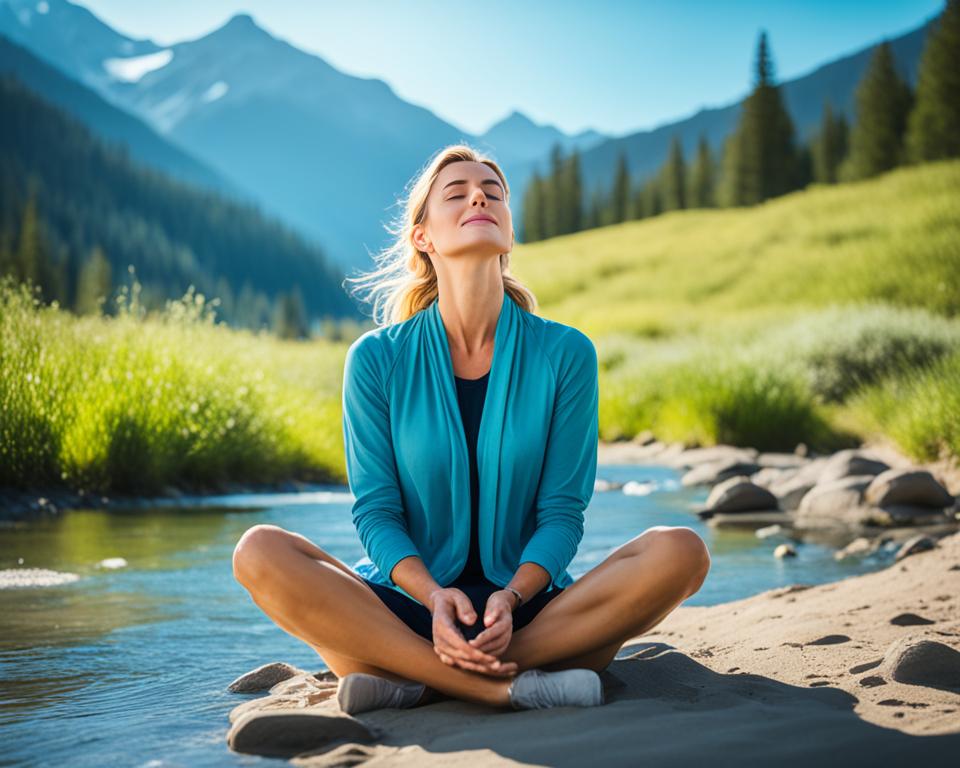Stress is a common problem that affects many people in their daily lives. However, there are simple relaxation techniques that can help reduce stress and promote overall well-being. This article will explore various methods, including deep breathing exercises, progressive muscle relaxation, guided imagery, mindfulness meditation, body scan relaxation, yoga nidra, visualization techniques, and calming music therapy. These techniques can be easily incorporated into daily routines to help individuals manage stress and improve their quality of life.
Read more interesting information at ::bizseeds
Introduction
Stress is a physiological response to various external or internal stimuli that can have negative impacts on an individual’s physical and mental health. Chronic stress can lead to a range of health problems, including headaches, muscle tension, anxiety, depression, and cardiovascular issues. However, practicing simple relaxation techniques can help alleviate the effects of stress and promote a sense of calm and well-being.
What is Stress?
Stress is the body’s natural response to challenging or demanding situations. When the brain perceives a threat or stressor, it triggers the release of hormones like cortisol and adrenaline, which prepare the body to either confront the challenge or flee from it. This “fight-or-flight” response can be beneficial in short-term, life-threatening situations, but prolonged exposure to stress can have detrimental effects on both physical and mental health.
Benefits of Relaxation Techniques
Engaging in relaxation techniques can help counteract the negative effects of stress by activating the parasympathetic nervous system, which is responsible for the body’s “rest and digest” response. By reducing physiological arousal, relaxation techniques can lower heart rate, blood pressure, and muscle tension, as well as decrease the production of stress hormones. This, in turn, can improve mood, enhance cognitive function, and support overall well-being.
Deep Breathing Exercises
Deep breathing exercises are a simple and effective way to reduce stress and promote relaxation. These techniques focus on slowing down the breath and engaging the diaphragm, which can help activate the parasympathetic nervous system and trigger the body’s natural “rest and digest” response.
Abdominal Breathing
Abdominal breathing, also known as diaphragmatic breathing, involves taking slow, deep breaths that expand the abdomen rather than the chest. This type of breathing can help lower blood pressure, reduce heart rate, and induce a state of calm and relaxation. To practice abdominal breathing, sit or lie down in a comfortable position, place one hand on your abdomen, and focus on drawing air deep into your belly as you inhale, and then slowly exhaling, allowing your abdomen to naturally deflate.
4-7-8 Breathing
The 4-7-8 breathing technique is another effective deep breathing exercise that can help alleviate stress and anxiety. This method involves inhaling for 4 seconds, holding the breath for 7 seconds, and then exhaling for 8 seconds. Repeat this cycle several times, focusing on the rhythm of your breath and allowing your body to relax with each exhale. This breathing pattern can help activate the parasympathetic nervous system and induce a state of calm.
Progressive Muscle Relaxation
One effective technique for reducing stress and promoting relaxation is progressive muscle relaxation. This method involves systematically tensing and releasing different muscle groups throughout the body. By consciously focusing on the sensations of tension and release, individuals can cultivate a greater awareness of physical and mental states, ultimately leading to a profound sense of calm and well-being.
Tensing and Releasing Muscle Groups
The progressive muscle relaxation process typically begins by focusing on the muscles in the feet and legs, slowly working upwards through the body. Participants are instructed to take a deep breath, tense the muscles in a particular area, hold the tension for several seconds, and then exhale while releasing the muscles. This process is repeated for each major muscle group, including the arms, shoulders, neck, and face.
By deliberately tensing and releasing the muscles, individuals can become more attuned to the sensations of physical stress and relaxation. This increased awareness can help to break the cycle of muscle tension that often accompanies mental and emotional stress, ultimately promoting a state of deep relaxation.
Guided Imagery
Guided imagery is a powerful relaxation technique that taps into the remarkable power of the human imagination. By visualizing serene and tranquil scenes, individuals can effectively distract their mind from the stresses and worries of daily life, promoting a profound sense of calm and well-being.
Visualizing Peaceful Scenes
One of the key aspects of guided imagery is the ability to create vivid mental images of calming and restorative environments. This could involve picturing a sun-dappled beach, a lush forest, or a serene mountain landscape. As you close your eyes and focus on these details, your brain responds by triggering the same neural pathways that would be activated if you were physically present in that setting.
Engaging the Senses
To enhance the effectiveness of guided imagery, it’s important to engage all of the senses. In addition to the visual details of the imagined scene, try to imagine the sounds, smells, and sensations associated with that environment. For example, if you’re visualizing a beach, you might imagine the gentle lapping of waves, the salty sea breeze, and the warmth of the sun on your skin. By engaging multiple senses, you can create a more immersive and realistic mental experience, further reducing stress and promoting relaxation.
Mindfulness Meditation
Mindfulness meditation is a relaxation technique that empowers individuals to focus on the present moment and cultivate a non-judgmental awareness of their thoughts, feelings, and sensations. By turning their attention inward and becoming more attuned to the here and now, people can reduce the distractions and worries that often contribute to stress and anxiety.
Focusing on the Present Moment
The core of mindfulness meditation lies in the practice of bringing one’s full attention to the present experience, without getting caught up in the past or future. This involves gently redirecting the mind whenever it wanders, and simply observing thoughts, emotions, and physical sensations as they arise and pass, without attempting to change or control them.
By remaining present and accepting of the current moment, mindfulness meditation can help individuals develop a greater sense of calm, clarity, and inner peace. Over time, this practice can enhance emotional regulation, improve focus and concentration, and foster a more compassionate, non-reactive stance toward life’s challenges.
Simple Relaxation Techniques
While the relaxation techniques discussed in this article can be highly effective, it’s important to find the ones that work best for each individual. Some people may prefer the physical aspect of progressive muscle relaxation, while others may find more benefit in the mental focus of mindfulness meditation or guided imagery.
Incorporating into Daily Life
To maximize the benefits of these techniques, it’s crucial to establish a consistent routine and set aside dedicated time for practice. This may involve carving out a few minutes each day or designating a specific time, such as before bedtime, to engage in relaxation exercises.
Finding the Right Technique
Experiment with different relaxation methods to discover which ones resonate with you the most. What may work well for one person may not be as effective for another. Be patient and open-minded as you explore these techniques, and don’t be afraid to try a variety of approaches to find the ones that truly help you manage stress and achieve a state of calm.

Body Scan Relaxation
Body scan relaxation is a powerful technique that involves systematically focusing attention on different areas of the body to release tension and promote a profound sense of calm. This practice typically begins by bringing awareness to the head and face, and then gradually moves down the body, observing any areas of discomfort or stress.
Releasing Tension from Head to Toe
The body scan relaxation exercise invites you to become deeply attuned to the sensations within your physical form, guiding your focus from the crown of your head to the tips of your toes. By consciously directing your attention to each region, you can identify and release any pockets of tension or constriction, allowing the body to fully relax and restore a state of equilibrium.
As you move through the body, notice how your breath naturally deepens and becomes more rhythmic. With each exhalation, visualize the release of any lingering stress or anxiety, letting go of worries and concerns that may have been weighing on your mind. By bringing a gentle, non-judgmental awareness to each area, you can cultivate a profound sense of inner peace and physical well-being.
Yoga Nidra
Yoga Nidra, also known as “yogic sleep,” is a deeply relaxing practice that involves a guided meditation and conscious relaxation of the body. This ancient technique is designed to guide the practitioner into a state of deep inner awareness and complete physical, mental, and emotional relaxation.
Conscious Relaxation of the Body
During a Yoga Nidra session, the practitioner is guided through a series of instructions that help them to systematically relax each part of the body, from the toes to the crown of the head. This process of conscious relaxation, known as “sankalpa,” helps to release tension and promote a sense of calm and well-being.
Exploring Awareness
Yoga Nidra also encourages practitioners to explore their inner awareness and consciousness. By turning their attention inward, individuals can gain a deeper understanding of their thoughts, emotions, and sensations, which can lead to greater self-awareness and increased resilience in the face of stress.
Visualization Techniques
Visualization techniques involve the use of the imagination to create mental images or scenarios that can promote relaxation and reduce stress. By picturing a peaceful, calming scene, individuals can distract their mind from the worries and stresses of daily life and enter a more relaxed state.
Creating Mental Images
The process of visualization often begins with closing the eyes and focusing on the breath. As the body and mind begin to relax, the individual can then start to imagine a serene and tranquil setting, such as a beach, a forest, or a mountain top. They can visualize the details of the scene, including the colors, sounds, and textures, as well as their own presence within the environment.
By engaging the senses and fully immersing themselves in the imagined scene, individuals can effectively shift their attention away from the stressors of the present moment and experience a sense of calm and well-being. This mental exercise can be particularly helpful for those who struggle with intrusive thoughts or anxious rumination.

Visualization techniques can be practiced on their own or in conjunction with other relaxation methods, such as deep breathing or progressive muscle relaxation. The key is to find a comfortable and quiet space, free from distractions, where the individual can fully focus on the mental imagery and allow their mind and body to unwind.
Calming Music Therapy
Calming music therapy is another effective relaxation technique that can help reduce stress and promote a sense of well-being. Listening to soothing, instrumental music can have a calming effect on the mind and body, helping to lower blood pressure, heart rate, and stress hormone levels.
Soothing Sounds
The power of music to induce relaxation has been well-documented. Studies have shown that listening to calming, nature-inspired soundscapes or classical compositions can trigger the parasympathetic nervous system, which is responsible for the body’s rest and digest response. This can lead to a reduction in physical tension, a slower heart rate, and a more peaceful, mindful state of being.
Incorporating Music into Relaxation
Integrating calming music into your relaxation routine can be a simple and effective way to enhance the experience. Whether it’s playing soft background music during a meditation session, or using it as the foundation for a guided visualization exercise, the soothing qualities of music can help to create a more immersive and therapeutic environment. Experiment with different genres and instruments to find the sounds that resonate most with you and your personal preferences.
Establishing a Relaxation Routine
To maximize the benefits of relaxation techniques, it’s essential to establish a consistent routine and set aside dedicated time for practice. This may involve carving out a few minutes each day or designating a specific time, such as before bedtime, to engage in relaxation exercises.
Setting Aside Time
Incorporating relaxation techniques into your daily schedule can be a game-changer in managing stress and promoting overall well-being. Whether it’s a 5-minute breathing exercise or a 20-minute guided meditation, making time for relaxation can have a profound impact on your physical and mental health.
Creating a Peaceful Environment
The environment in which you practice relaxation techniques can also greatly influence their effectiveness. Aim to create a serene, distraction-free space that allows you to fully immerse yourself in the experience. This may involve dimming the lights, lighting candles, or playing calming music to set the mood and help you achieve a state of deep relaxation.
Overcoming Obstacles
While the relaxation techniques discussed in this article can be highly effective, there may be some obstacles or challenges that individuals face when trying to incorporate them into their daily lives. One common obstacle is managing distractions, such as work responsibilities, family obligations, or the constant pull of technology and social media.
Managing Distractions
To overcome distractions, it’s important to create a dedicated space and time for relaxation practice. This may involve setting aside a quiet corner in your home, turning off notifications on your devices, or scheduling relaxation exercises during a time of day when you are less likely to be interrupted. By minimizing external stimuli, you can better focus on the present moment and derive the full benefits of the relaxation techniques.
Staying Motivated
Maintaining a consistent relaxation practice can also be a challenge, especially when the stresses of daily life seem to mount. To stay motivated, it’s important to recognize the tangible benefits of relaxation, such as improved sleep, reduced anxiety, and increased productivity. You may also find it helpful to set realistic goals, track your progress, and celebrate small victories along the way. Additionally, consider enlisting the support of friends or family members who can encourage and remind you to prioritize your well-being.
By addressing these common obstacles and adapting the relaxation techniques to your unique circumstances, you can unlock the profound benefits of stress relief and cultivate a greater sense of overall well-being.
